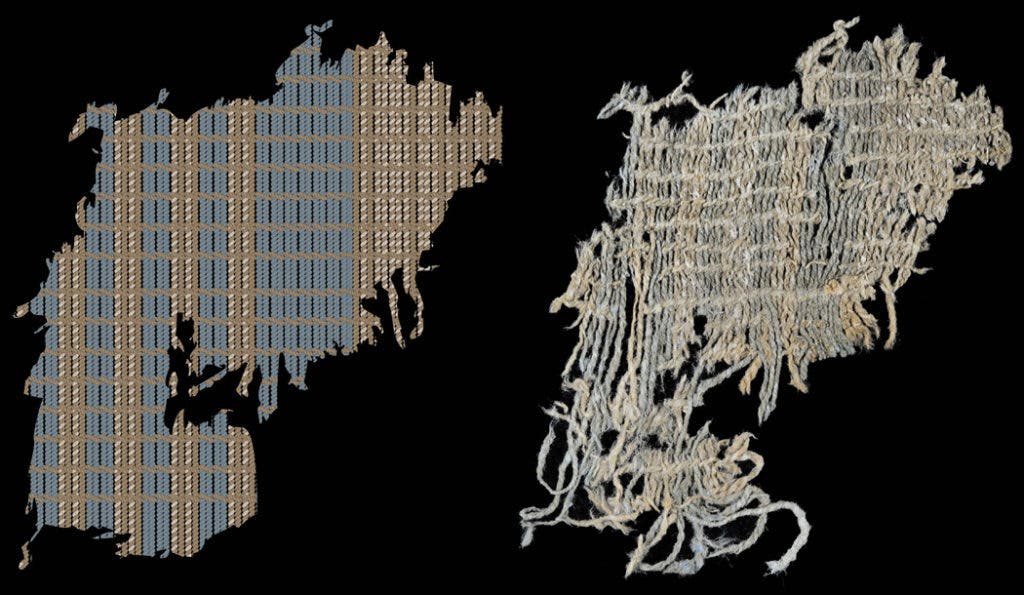Archaeologists have found the oldest known pieces of indigo-dyed cotton in Huaca Prieta, northern Peru, and it goes to show that a good pair of jeans will last you forever — the materials are at least 6,000 years old.

Photograph of specimen 2009.052.01.B found at the site and reconstruction of the original patterns. This fragment is between 4100 and 3500 years old and has an indigo-blue stripe highlighted with ochre.
Image credits Jeffrey C. Splitstoser et al., Science Advances (2016.)
Huaca Prieta is the site of an prehistoric settlement in northern Peru which was occupied between 14,500 and 4,000 years ago. It is a large stone and earthen ceremonial mound first excavated in the 1940s, which has (repeatedly) produced the oldest known cotton fabrics decorated with recognizable art in the Americas. Recently, an international team of archaeologists found and analyzed eight fragments of cotton textile at the site. The pieces appear to have belonged to bags or containers, most were under one square foot in size, and they were dated to roughly 6,000 years ago in Huaca’s Preceramic period.
Cotton is believed to have been domesticated independently in several parts of the ancient world — such as South Asia or the Middle East — but it probably first happened on Peru’s northern coast, at least 7,800 years ago. Cotton probably saw widespread use in the area by the preceramic period, so finding the material here while unlikely, isn’t groundbreaking. Something else, however, is.
The most striking feature of the textiles are the still-visible dyes used to adorn the weave. Strands of blue-indigo were woven with ochre to create beautiful patterns, some of which are still visible today.
“The textiles were originally very, very dirty,” says archaeologist Jeffrey Splitstoser, an expert in textile structures and co-author of the research paper. “You could see blue in some of the samples but they were mostly grey. You know how your blue jeans fade over time? Well, these were like 6,000-year-old blue jeans.”
The team used high-performance liquid chromatography to identify the dyes‘ make-up. They found plant-based indigo dyes in five of the eight samples, ranging in age from 6,200 to around 1,500 years old.
This predates the oldest known use of indigo-dyed textiles (from the time of Egypt’s Fifth Dynasty and dated to approximately 2400 B.C) by more than 3 millennia.
The cotton used by Peruvians them, Gossypium barbadense, also known as Pima cotton, has since been used to create the mainstay strains used by modern cotton industry, Splitstoser says. So the jeans you’re wearing tight now aren’t very different from these eight fragments — take good care of them, and they might last you 6,000 years.
“South Americans really did contribute to [the history] of blue jeans,” Splitstoser adds.
The full paper “Early pre-Hispanic use of indigo blue in Peru” has been published in the journal Science Advances.









